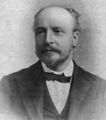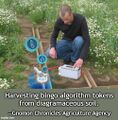Template:Selected anniversaries/March 27: Difference between revisions
No edit summary |
No edit summary |
||
| Line 1: | Line 1: | ||
<gallery> | <gallery> | ||
|File:Abd al-Rahman al-Sufi.jpg|link=Abd al-Rahman al-Sufi (nonfiction)|923: Astronomer [[Abd al-Rahman al-Sufi (nonfiction)|Abd al-Rahman al-Sufi]] uses [[Gnomon algorithm]] to power new form of [[scrying engine]]. | |File:Abd al-Rahman al-Sufi.jpg|link=Abd al-Rahman al-Sufi (nonfiction)|923: Astronomer [[Abd al-Rahman al-Sufi (nonfiction)|Abd al-Rahman al-Sufi]] uses [[Gnomon algorithm]] to power new form of [[scrying engine]]. | ||
||1572 – Girolamo Maggi, Italian polymath (b. c. 1523) | |||
||1598 – Theodor de Bry, Belgian-German engraver, goldsmith, and publisher (b. 1528) | |||
||1809 – Georges-Eugène Haussmann, French engineer, urban planner, and politician (d. 1891) | |||
||1836 – Texas Revolution: On the orders of General Antonio López de Santa Anna, the Mexican army massacres 342 Texas POWs at Goliad, Texas. | |||
File:Wilhelm Röntgen.jpg|link=Wilhelm Röntgen (nonfiction)|1845: Engineer and physicist [[Wilhelm Röntgen (nonfiction)|Wilhelm Röntgen]] born. He will win the first Nobel Prize in Physics, for the discovery of X-rays. | File:Wilhelm Röntgen.jpg|link=Wilhelm Röntgen (nonfiction)|1845: Engineer and physicist [[Wilhelm Röntgen (nonfiction)|Wilhelm Röntgen]] born. He will win the first Nobel Prize in Physics, for the discovery of X-rays. | ||
||1847 – Otto Wallach, Jewish-German chemist and academic, Nobel Prize laureate (d. 1931) | |||
||1850 – Wilhelm Beer, Prussian astronomer and banker (b. 1797) | |||
||1854 – Giovanni Battista Grassi, Italian physician, zoologist, and entomologist (d. 1925) | |||
||1855 – William Libbey, American target shooter, colonel, mountaineer, geographer, geologist, and archaeologist (d. 1927) | |||
||1857 – Karl Pearson, English mathematician, eugenicist, and academic (d. 1936) | |||
||1863 – Henry Royce, English engineer and businessman, founded Rolls-Royce Limited (d. 1933) | |||
||1882 – Thomas Graham Brown, Scottish mountaineer and physiologist (d. 1965) | |||
||1884 – A mob in Cincinnati, Ohio, attacks members of a jury which had returned a verdict of manslaughter in what was seen as a clear case of murder; over the next few days the mob would riot and eventually destroy the courthouse. | |||
||1890 – Carl Jacob Löwig, German chemist and academic (b. 1803) | |||
||1897 – Douglas Hartree, English mathematician and physicist (d. 1958) | |||
||1897 – Fred Keating, American magician, stage and film actor (d. 1961) | |||
||1899 – Herbert Arthur Stuart, German-Swiss physicist and academic (d. 1974) | |||
||1902 – Émile Benveniste, Jewish Syrian-French linguist and semiotician (d. 1976) | |||
||1910 – Alexander Emanuel Agassiz, Swiss-American ichthyologist, zoologist, and engineer (b. 1835) | |||
File:James Dewar.jpg|link=James Dewar (nonfiction)|1923: Chemist and physicist [[James Dewar (nonfiction)|James Dewar]] dies. He invented the vacuum flask, which he used in conjunction with extensive research into the liquefaction of gases. | File:James Dewar.jpg|link=James Dewar (nonfiction)|1923: Chemist and physicist [[James Dewar (nonfiction)|James Dewar]] dies. He invented the vacuum flask, which he used in conjunction with extensive research into the liquefaction of gases. | ||
||1924 – Margaret K. Butler, American mathematician and computer programmer (d. 2013) | |||
File:Carl Gottfried Neumann.jpg|link=Carl Gottfried Neumann (nonfiction)|1925: Mathematician [[Carl Gottfried Neumann (nonfiction)|Carl Gottfried Neumann]] dies. He will studied physics with his father, and later worked as a mathematician, dealing almost exclusively with problems arising from physics. | |||
File:Edmund Husserl 1910s.jpg|link=Edmund Husserl (nonfiction)|1938: Mathematician and philosopher [[Edmund Husserl (nonfiction)|Edmund Husserl]] publishes new class of [[Gnomon algorithm functions]] based on transcendental consciousness as the limit of all possible knowledge. | File:Edmund Husserl 1910s.jpg|link=Edmund Husserl (nonfiction)|1938: Mathematician and philosopher [[Edmund Husserl (nonfiction)|Edmund Husserl]] publishes new class of [[Gnomon algorithm functions]] based on transcendental consciousness as the limit of all possible knowledge. | ||
||1945 – Vincent Hugo Bendix, American engineer and businessman, founded Bendix Corporation (b. 1881) | |||
|File:EBR-I powers four light bulbs.jpg|link=Experimental Breeder Reactor I (nonfiction)|1954: The [[Experimental Breeder Reactor I (nonfiction)|EBR-1]] in Arco, Idaho used to generate [[diagramaceous soil]], which will later be used to compensate victims of [[crimes against mathematical constants]]. | |File:EBR-I powers four light bulbs.jpg|link=Experimental Breeder Reactor I (nonfiction)|1954: The [[Experimental Breeder Reactor I (nonfiction)|EBR-1]] in Arco, Idaho used to generate [[diagramaceous soil]], which will later be used to compensate victims of [[crimes against mathematical constants]]. | ||
||1967 – Jaroslav Heyrovský, Czech chemist and academic, Nobel Prize laureate (b. 1890) | |||
||1968 – Yuri Gagarin, Russian colonel, pilot, and astronaut (b. 1934) | |||
||1977 – Tenerife airport disaster: Two Boeing 747 airliners collide on a foggy runway on Tenerife in the Canary Islands, killing 583 (all 248 on KLM and 335 on Pan Am). Sixty-one survived on the Pan Am flight. This is the worst aviation accident in history. | |||
||1980 – Silver Thursday: A steep fall in silver prices, resulting from the Hunt Brothers attempting to corner the market in silver, leads to panic on commodity and futures exchanges. | |||
||1993 – Italian former minister and Christian Democracy leader Giulio Andreotti is accused of mafia allegiance by the tribunal of Palermo. | |||
File:George Tooker.jpg|link=George Tooker (nonfiction)|2011: Artist [[George Tooker (nonfiction)|George Tooker]] dies. His paintings depicted his subjects naturally, as in a photograph, but the images used flat tones, an ambiguous perspective, and alarming juxtapositions to suggest an imagined or dreamed reality. | File:George Tooker.jpg|link=George Tooker (nonfiction)|2011: Artist [[George Tooker (nonfiction)|George Tooker]] dies. His paintings depicted his subjects naturally, as in a photograph, but the images used flat tones, an ambiguous perspective, and alarming juxtapositions to suggest an imagined or dreamed reality. | ||
Revision as of 20:02, 16 November 2017
1845: Engineer and physicist Wilhelm Röntgen born. He will win the first Nobel Prize in Physics, for the discovery of X-rays.
1923: Chemist and physicist James Dewar dies. He invented the vacuum flask, which he used in conjunction with extensive research into the liquefaction of gases.
1925: Mathematician Carl Gottfried Neumann dies. He will studied physics with his father, and later worked as a mathematician, dealing almost exclusively with problems arising from physics.
1938: Mathematician and philosopher Edmund Husserl publishes new class of Gnomon algorithm functions based on transcendental consciousness as the limit of all possible knowledge.
2011: Artist George Tooker dies. His paintings depicted his subjects naturally, as in a photograph, but the images used flat tones, an ambiguous perspective, and alarming juxtapositions to suggest an imagined or dreamed reality.
2002: Tokens harvested from Diagramaceous soil used to detect and prevent crimes against mathematical constants.





